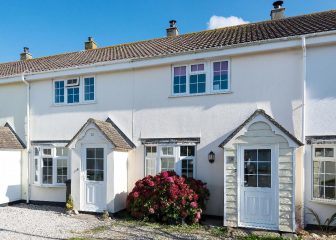 The proportion of owner occupiers in England has remained broadly unchanged since 2019, new figures show.
The proportion of owner occupiers in England has remained broadly unchanged since 2019, new figures show.
Some 65% of the estimated 24 million households in England, were owner occupied in 2020-21, which is the same as in 2019-20, but a rise from 63% in 2015-16, the English Housing Survey 2020-2021 shows.
The data shows that in 2020-21, 35% of households were outright owners, while 30% were buying with a mortgage.
The private rented sector (PRS) accounted for 19% – 4.4 million – of households in England, unchanged from 2019-20, but lower than the 20% recorded in 2015-16.
Unsurprisingly, renting was more common in London , with 27% of households living in the PRS in 2020-21, up from 17% of households in the rest of England.
The social rented sector, at 4 million households – 17% – was still the smallest, with 10% – 2.4 million – renting from housing associations, and 7% – 1.6 million – from local authorities.
The English Housing Survey data also revealed that in 2020, 13% of dwellings in the social rented sector failed to meet the Decent Homes Standard. This was lower than the proportion of private rented – 21% – and owner-occupied – 16% – homes.
The energy efficiency of English housing stock continued to improve. In 2020, the average SAP rating of English dwellings was 66 points, up from 65 points in 2019.

Mark Hayward, chief policy adviser at Propertymark, commented: “The latest findings from the English Housing Survey 2020 to 2021 reveal that since 2016, the proportion of the private rented sector as a tenure has decreased by almost 2%, amounting to a huge 258,000 households. Simultaneously, alongside other latest figures released on the number of households currently on housing waiting lists, there has been an increase of 3.6 per cent to over 1.18 million people in the last year alone. An inevitable outcome of a severe undersupply of homes to rent in both the social and private rented sectors.
“This steady decline in the size of the private rented sector over the last five years should act as a warning sign to the UK government in that more needs to be done to protect the sector especially at a time when rented homes are need more than ever.
“The private rented sector has a crucial role to play in levelling up our country and communities as we work to recover from the ongoing effects of the pandemic, but in recent years, landlords have faced considerable legislative change meaning many are choosing to leave the market.
“On a more reassuring note, our letting agent members have been working hard with their landlords to improve standards in homes in the private rented sector so it’s positive to see this hard work reflected in the report.
“It is also positive to see the energy efficiency ratings of more homes are improving. However, there is still much work to do if the sector is to achieve The UK government’s targets of all properties reaching a minimum band C rating by 2025 as there is still 58 per cent with and EPC rating of Band D or below.
“During a time of financial strain due to the COVID-19 pandemic, which will continue to have lasting effects, the costs of bringing housing stock up to EPC Band C will be a significant challenge for many.
“The UK government must review the help available to landlords in order to make the improvement they need to help them meet their target of net-zero emissions by 2050 and listen to our calls for longer term goals to be set which implement realistic incremental targets and consider the age, condition and size of properties as part of this.
“With the UK government’s Renters’ Reforms White Paper in development, now is the perfect opportunity to heed the important messages coming from this report and make sure they propose a deal that does not push more landlords out of the market.”


Maybe the predictions are coming true about landlords giving up the PRS in the face of increasing regulations like the potential banning of section 21, licensing schemes, rent controls, eviction bans, electrical checks, changing EPC ratings, slowness of court proceedings and the Governments hatred of the PRS even though we are doing their job for them. The latest reflection of this is the total lack of help for Landlords’ loss of income due to rent arrears caused by the pandemic. If the PRS is shrinking but the number of home owners is remaining the same what is going on? I believe that because of rapid housing price rises, older landlords (like us) who have savings and are without debt might prefer to leave their houses empty after tenants leave, using them as an investment (just like Russian Oligarchs do in London but on a tinier scale) where you get more than the 0.01% you would get from having the money in the bank and benefiting from reduced repair costs, no tenant risks or having to comply with every new regulation dreamed up by the Government on the insistence of Shelter and Generation Rent to punish the PRS. We recently refurbished a trashed rental home. It took some time but now it’s in good order. During this time the value of the house increased by a substantial portion of the rent lost during the renovation period. We are now very much in two minds about renting it again or leaving it empty. Of course we would make more by letting it appreciate and renting it out, but this is not risk free. If the prices stopped rising or we suddenly needed the money, we could quickly sell up and get the best price without having to evict a tenant or refurbish the place (again). At today’s prices we could get the equivalent of 25 years rent after tax with no hassle. Tempting or what?
You must be logged in to like or dislike this comments.
Click to login
Don't have an account? Click here to register